02.06.2015
NEVERENDUM
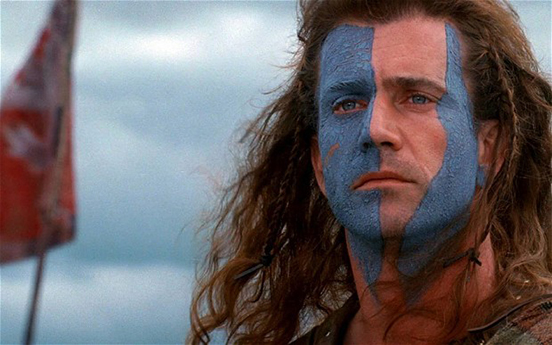
A few months ago - on the anniversary of the Battle of Bannockburn, a great victory of the Scots over the English in 1314 that ensured Scottish independence until 1701 - Scotland voted, narrowly, to remain part of the United Kingdom. But the urge amongst many Scots to return to the independence they once enjoyed, is undiminished. The Scottish National Party (SNP) is now the third biggest party in the UK, with almost every Scottish parliamentary seat, and with the avowed aim of an independent Scotland. Many predict Scotland will be a separate nation by the end of the decade.
"For the SNP, their stunning victory [in the May 2015 general election] can only increase the pressure on Nicola Sturgeon [SNP leader] to include a commitment to a second independence referendum in her party's manifesto for next year's Scottish elections.
So far, Scotland's first minister has carefully avoided giving any such commitment. However, it is hard to see how Ms Sturgeon will be able to hold her party back.
It means the future of the Union could yet again be on the agenda - despite the opinion of the party's former leader Alex Salmond that it was settled for a generation."
Norman Smith, BBC Assistant Political Editor, 8 May 2015
The consensus amongst political journalists is that Sturgeon might well hold another referendum during the next parliament, a process known as a Neverendum, politicians holding referenda again and again, until they get the result they want. If Scotland were to leave the United Kingdom, what flag would the Former United Kingdom be flying? We dealt with this in a previous blog, but we have subsequently had some more ideas, done more research. It's a serious matter!
Without Scotland, the UK would have to change its name - since only England is a Kingdom, Northern Ireland and Wales are not, you can't have a United Kingdom with only one Kingdom. In the absence of any better idea, like Yugoslavia became the Former Yugoslavia, we will be the Former United Kingdom - we risk being known to the world as FUK.
And when Scotland's blue saltire disappears from the Union flag, commonly known as the Union Jack, will the FUK continue with a flag with one part missing - leaving only crosses for England and Ireland, and no representation for Wales at all - or take the opportunity to go back to the drawing board?
THE DOMINO COLLAPSE
The demise of the Union Jack extends far beyond the white cliffs of Dover - because of the Empire, the Union Jack is used all over the world by other nations, if it no longer exists, what will they do?
One example is Australia, whose flag has the Union Jack in the "canton" or upper corner.
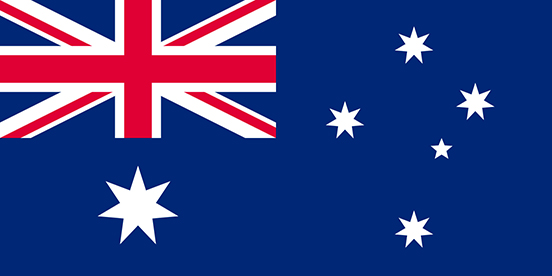
This canton design is common throughout the Commonwealth, not only for numerous former colonies that are now independent nations, but as this fantastic poster shows; progressively smaller and smaller organisations all use the same design: states, yacht clubs and sports teams. There is no hierarchy. No design of supreme flag that represents the nation - no unique flag to stand for a unique nation, just a generic flag for British territory.
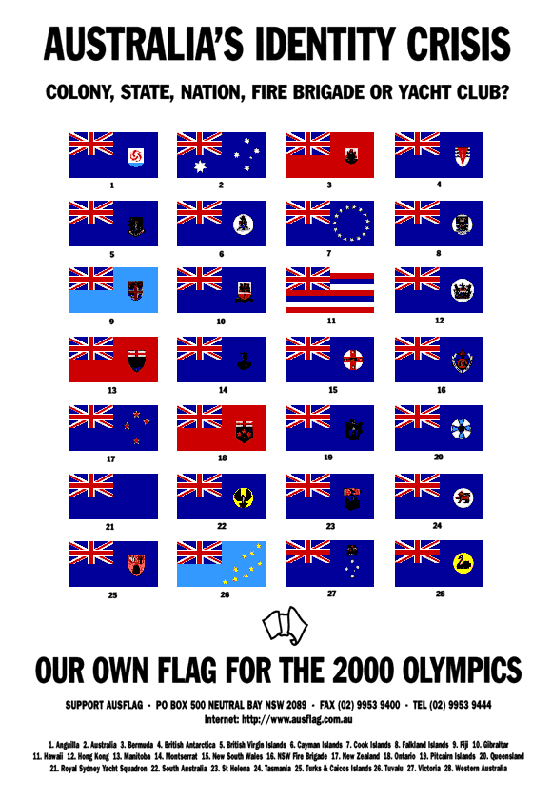
The standardised canton design, parcelled out to pretty much everyone in the British Empire, regardless of size, status, or need, is a product of the insensitivity of colonialism, which reduces anyone outside the mother country to a subsidiary, a possession, a fragment. The existence of the Union Jack in the corner, and the one-fits-all design says: you belong to the UK - "dominions thereunto belonging" as the Coronation Oath puts it.
It is vexillological colonialism.
The loss of the Union Jack could be the provocation that those eager for a flag special to their nation have been longing for. Both Australia and New Zealand have had viable designs in waiting for decades, and powerful lobbies arguing for their adoption. Indeed, there is, as I write this, a competition run by the New Zealand Government to design the new flag for New Zealand. If New Zealand votes (via two referenda, they are playing super safe) then surely the others still flying old British colonial flags will follow; Australia, Fiji before it sinks under rising sea levels, Monserrat, Niue, Pitcairn and Saint Helena. (But maybe not the Falklands, who owe the Motherland too much.)
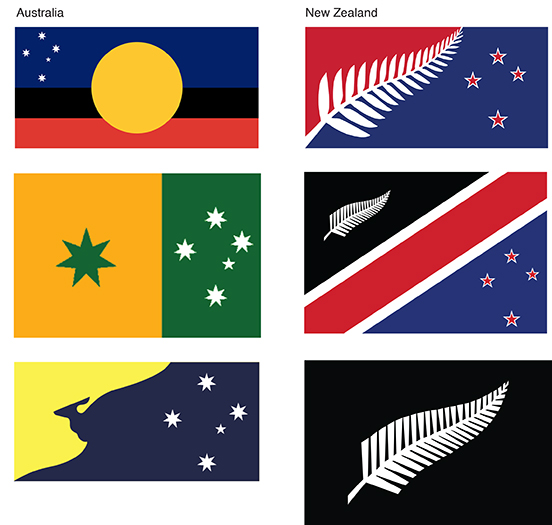
This will complete a process of decolonialisation in practice since the Second World War. The individuality of liberation. Dominions thereto unbelonging.
This marvellous study of "discarded Jacks" was compiled by John Ansell.
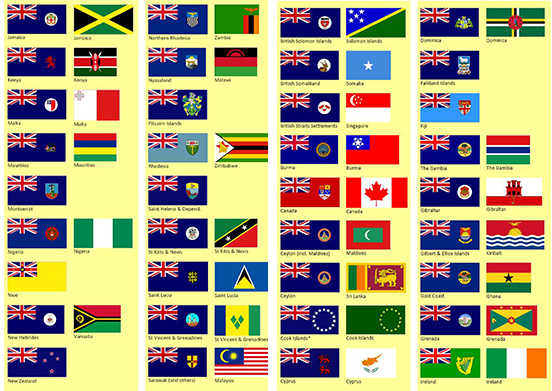
An independent Scotland will set an example to peoples who were also once independent, so-called "aspirant peoples", it will fire up their longing to be independent nations again, or for the first time. There is low-level unrest among peoples all over Europe - the Catalans, Basques, Corsicans, Sardinians, Lombards and countless others. For this reason Spain and Greece have said they would veto an independent Scotland's membership of the EU, so as to punish and marginalise the new nation, and dissuade the most rowdy would-be-nations; the Basques, Catalans and Greek Macedonians. (The Spanish and French are hardly unlikely to go to war over territories succeeding, the Greeks might.)
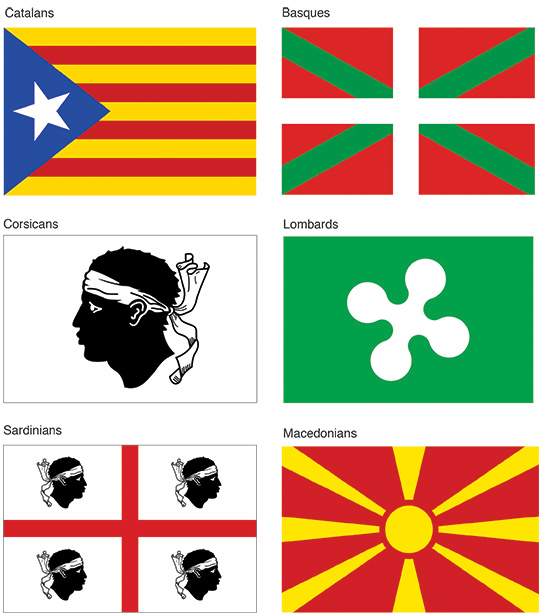
Other effects caused by the demise of the Union Jack are commercial. Thousands of companies use the flag, British Airways is a prime example. Their brand's credibility is drawn from the credibility of the flag it emulates. What happens when that flag no longer exists?

LAST HOPE
Our original post and Union Jack redesigns was reposted by Creative Review, and a number of people posted comments. Two people who posted, or was it three, had the same idea, to simply turn the blue saltire Welsh green - which I think is an excellent way of retaining the Union Jack design, and addressing the inexplicable and inexcusable omission of Wales.
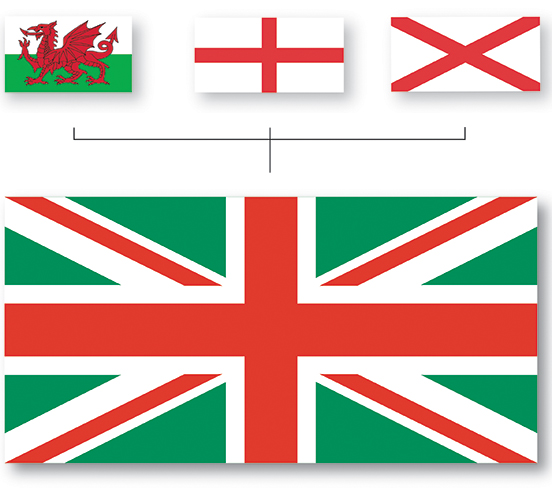

NEW INGREDIENTS
In a marvellously detailed television programme about Scotland's succession by Andrew Neil, a vexillologist he interviewed about the Union Jack mentioned the flag of South Africa, saying in any new flag, we would have to consider a design of that kind, both because it is new, a break with a past that no longer exists, and because of what its design represents: diverse peoples brought together in a nation.
South Africa glories in calling itself The Rainbow Nation, a melting pot of different peoples under a single banner. Modern Britain is not so very far from this. Fusion is actually the entire point of the United Kingdom: English combined with Scottish, Welsh and Northern Irish. And in modern Britain we need to add; West Indians, Nigerians and Ghanians, Pakistanis and Bangladeshis, Cypriots and Australians, Danes and Poles. (I love facts like these: after Copenhagen and Aarhus, the third biggest Danish city is London. There are more Poles in London than any Polish city other than Warsaw.)
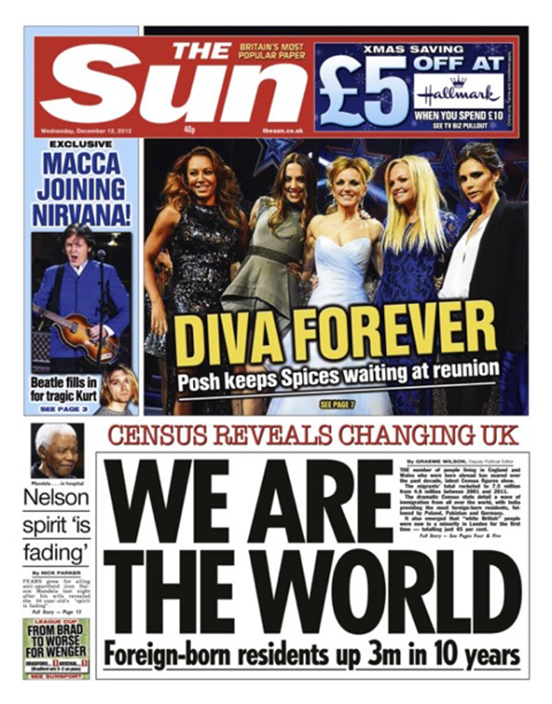
The design route laid out by the vexillologist - colours and some kind of geometry - at first seems simple and promising. After all, the monumentally successful tricoleur of France, which has been adopted by about a quarter of the world's nations as a model, is exactly that.
Another very promising precedent is Japan, with its stunning red sun disc, a simple red circle representing both its location as the most easterly nation, the Land of the Rising Sun, and the unity and like-mindedness of its people. This flag is the favorite of any graphic designer, so spare and so beautiful. Could Britain's new flag be pure like this?

DIVERISITY VS UNITY
But the design avenue of lots of colours with a touch of geometry, is actually a risky path. Let's start with the flag the vexillogist used as an example: South Africa. Does anyone think this is great flag? An aesthetic triumph? In my opinion, its a mess. What is that triangle? Meaning what? Too many colours in what seems like confusingly random quantities.

Lots of colours grouped together can be taken as a good visual metaphor for togetherness, inclusiveness. Things being distinct (red is red and not green) but by being gathered together (green and red next to each other), they create a kind of harmony. But, in my opinion, in the case of South Africa, very far from harmonious.
This metaphorical message - harmonious diversity - has lead all kinds of groups to raid the Pantone book.
Perhaps the most ubiquitous one, in Asia at least, where I spend a great deal of time, is the flag for Buddhism, which can be seen in the thousands strung up as bunting around pagodas and temples from India to Japan. (The flag is explained on Wiki with the usual flag-explanation-nonsense: "blue symbolises the spirit of universal compassion for all beings" ... really? Blue equals compassion??? Is this something all Chelsea fans know, being burstingly full of compassion? And the wearers of blue suits know, all those bankers oozing compassion?)
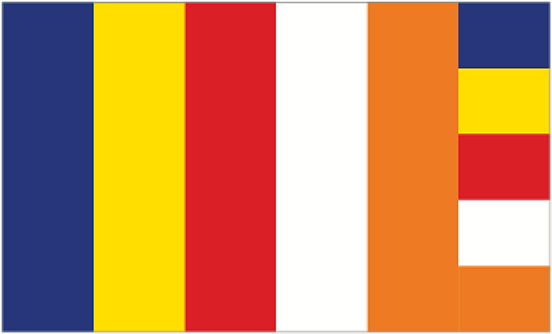
We should think it is easy to make a new flag for the UK out of a happy set of random stripes, or stripes with a zigzag. One area that has thoroughly explored this design area is sexual orientations... does Britain want to be one more in this series?
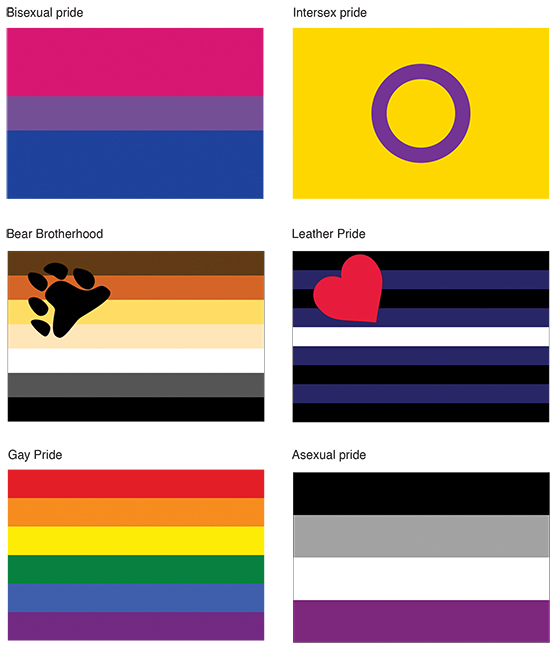
Other notable coloured stripe designs are both by Dutch men.
The architect Rem Koolhaas suggested an alternative flag for the European Union, given the horrible name of "The Barcode". It failed to gain any traction as a genuine successor to the European Union stars for four reasons. 1. The young Dutch architects in Koolhaas' office messed up Estonia's colours which damaged its credibility, 2. The issue of 'whose colours come first' could not be answered, 3. No one was asking for a new flag, it was all driven by Koolhaas ... but most interestingly for us; 4. Critics at the time said with all its fragmentary stripes it did not represent a coherent entity.
Europe pre-2004: 15 European Countries
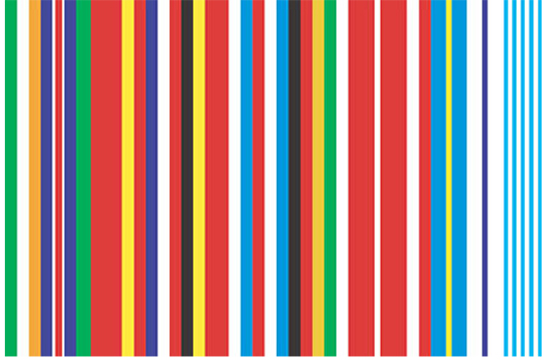
An enlarged Europe: 25 European Countries, it grows by simply adding more stripes!
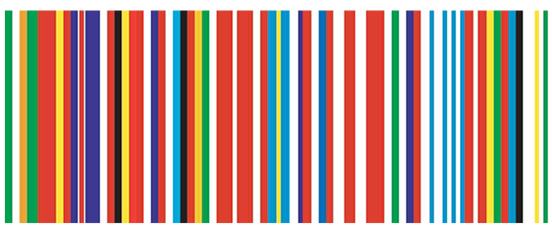
Tom W. Bell's parody exposes The Barcode's flaw: flags need to be simple.
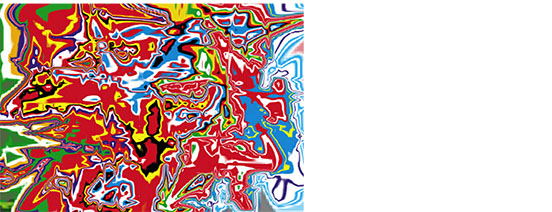
The lesson is: a whole load of stripes don't necessarily add up to a whole.
A young Dutch designer, Arjan Groot, turned his graduation project at the Rietveld Academy into one of my favourite books. He organised all world flag designs into a series of options, then he collected all the colours from all the flags, and produced every design in every colour combination. Hundreds of thousands of them. It is Modernist rationality applied to the chaos of national flags. Computer logic smoothing out historic illogic.
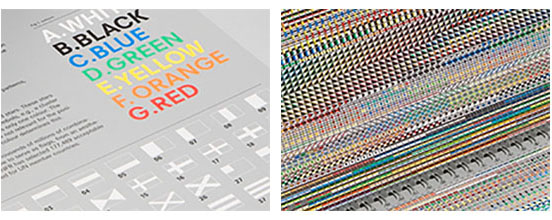
Groot's gorgeous carpet of flags springs from his initial parameters, but like anything from a computer, it's endless, it's indiscriminate, it can't choose.
A WAY FORWARD
This is where history can step in to help us.
I make the point again that I made in the last post on this subject, a flag has a big job to do. It has to represent the past and the future, it has to be both intelligible and mystical, it has to have a logic, a story about how it came to be, and yet this story has to dissolve as though the flag was obvious, natural, and had always existed.
History, the story of the past, gives us a credible origin for a new flag. History is shared. We all have family histories that go back in time, until they become misty and mythic. Just like the national history. At some point, our own histories tie us into the history of this country of countries, otherwise why are we here, there must be a point when we joined the British nation.
Using history is using something that is already shared, already mysterious and heavy with import.
"The key to rebranding is not flags and logos but defining a story that is unique to the country and rooted in reality"
Mark Leonard
Well yes and no, Mark Leonard. You are right a story matters. You are right reality matters most. But no nation can be called a nation without a flag. (Even if it's actually two nations, England and Wales, plus whatever Northern Ireland is.)
Most nations deliberately chose to avoid anything like an image, because an image would be difficult or divisive - and this is a perfect reason to do exactly that, to set ourselves apart from timid abstraction. Look at how our proposed design of the British rose stands out from the flags of our immediate neighbours.
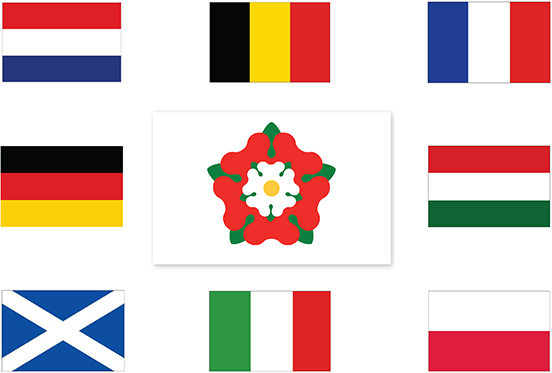
More than one person has commented that the rose with its yellow centre looks vaguely like a tomato and an egg. But why is this a bad thing? What could be more British? Our national dish. (Interestingly called an English Breakfast in England, an Irish Breakfast in Ireland, a Welsh Breakfast...) Its better to look like something, than nothing. Breakfast or barcode?
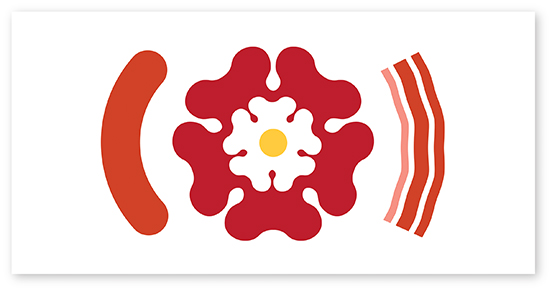
Talking of the Breakfast Flag, Jamie Oliver made a television program about the different cultural foods eaten in Britain, and the intro sequence for the program sported a lovely version of the Union Jack.
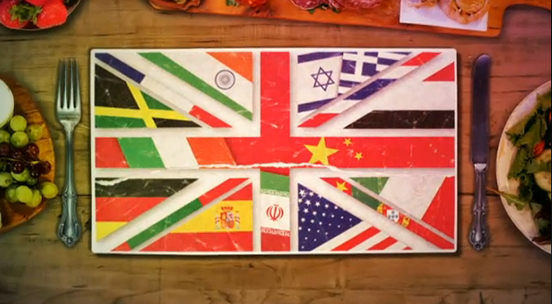
We chose the rose, explained at length in our last post, as a more inclusive emblem for England, Wales and Northern Ireland than saint's crosses. It's especially tidy that Henry Tudor, from whom the rose comes, was Welsh, born of the Tudors of Penmynydd, as well as King of England.
Inspired by the The Sun's exclamation (see above: We Are The World), we have produced our rose flag in colour-ways that derive from the flags of nations that have given people to the UK. Imagine a set like this being flown along the Mall, or around the green sward outside Parliament. Anyone passing by would spot the colours of their national flag, or their spouse's, or their parents', grandparent's or great grandparents' national flag. It is the perfect way to show how polycultural Britain is.
(In the case of just my own family, including my cousins, these parental flags would be: England, Ireland, Wales, Thailand, Sri Lanka, and Scotland. Each of you reading this post must be similar.)
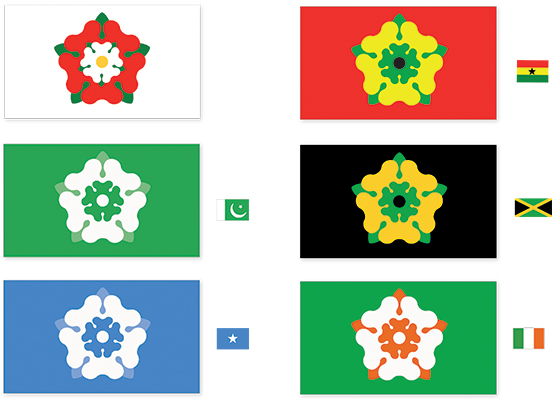
Peter Saville talks here about St. George's cross... and he seems to have had a similar idea, about using the device in different colours to express England's multicultural make-up. In Saville's usual dramatic coinage the tiny coloured crosses are "cultural provocation", and I agree.
It is necessary in an age of polyculturalism, mixed origins, multiple loyalties to have national emblems that are porous. If a national flag is going to be loved by all the people in that nation, it has to have something for them to attach themselves to, some part of its story, of its meaning that reaches out to them.
We need a design for the Former UK which is both fixed and malleable. One that shines out from the crowd of stripes that most countries fly. One that reaches meaningfully backwards into the best of our history. One that looks forward to the kind of nation we are maturing into.
PARADE
Here is a resumé of our designs for the post-Scottish independence UK. Like Australia and New Zealand, we will keep these tucked away until the day comes. Which it will. Soon.
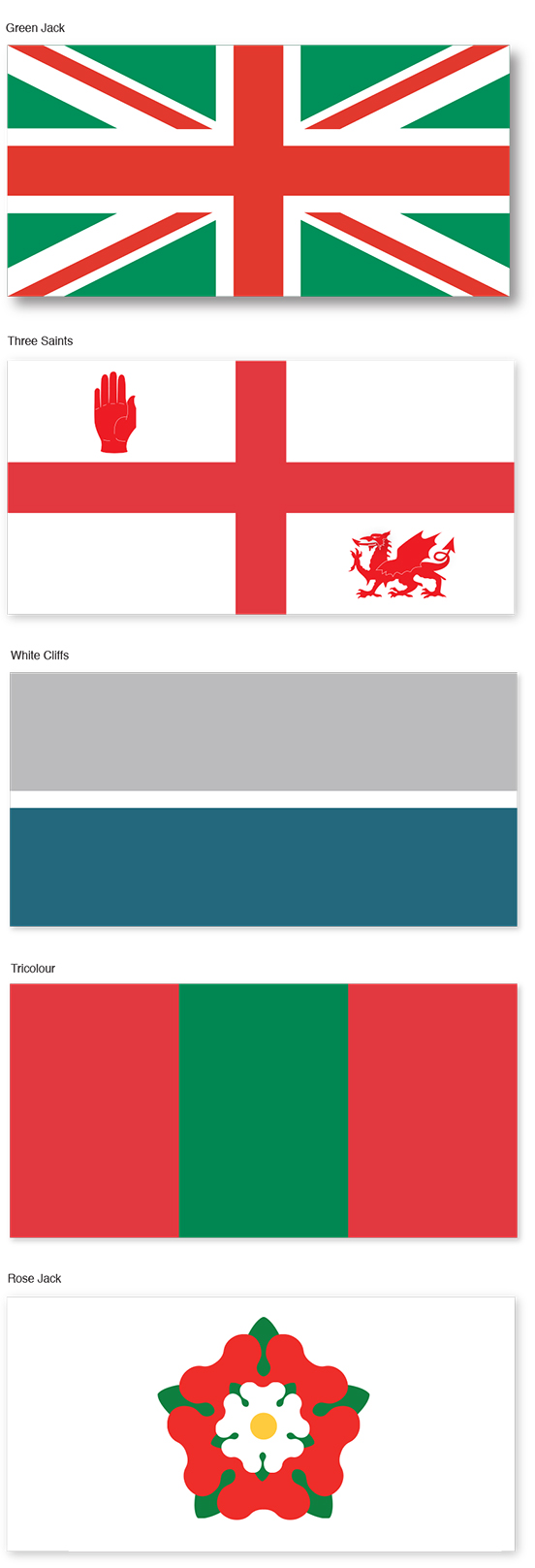
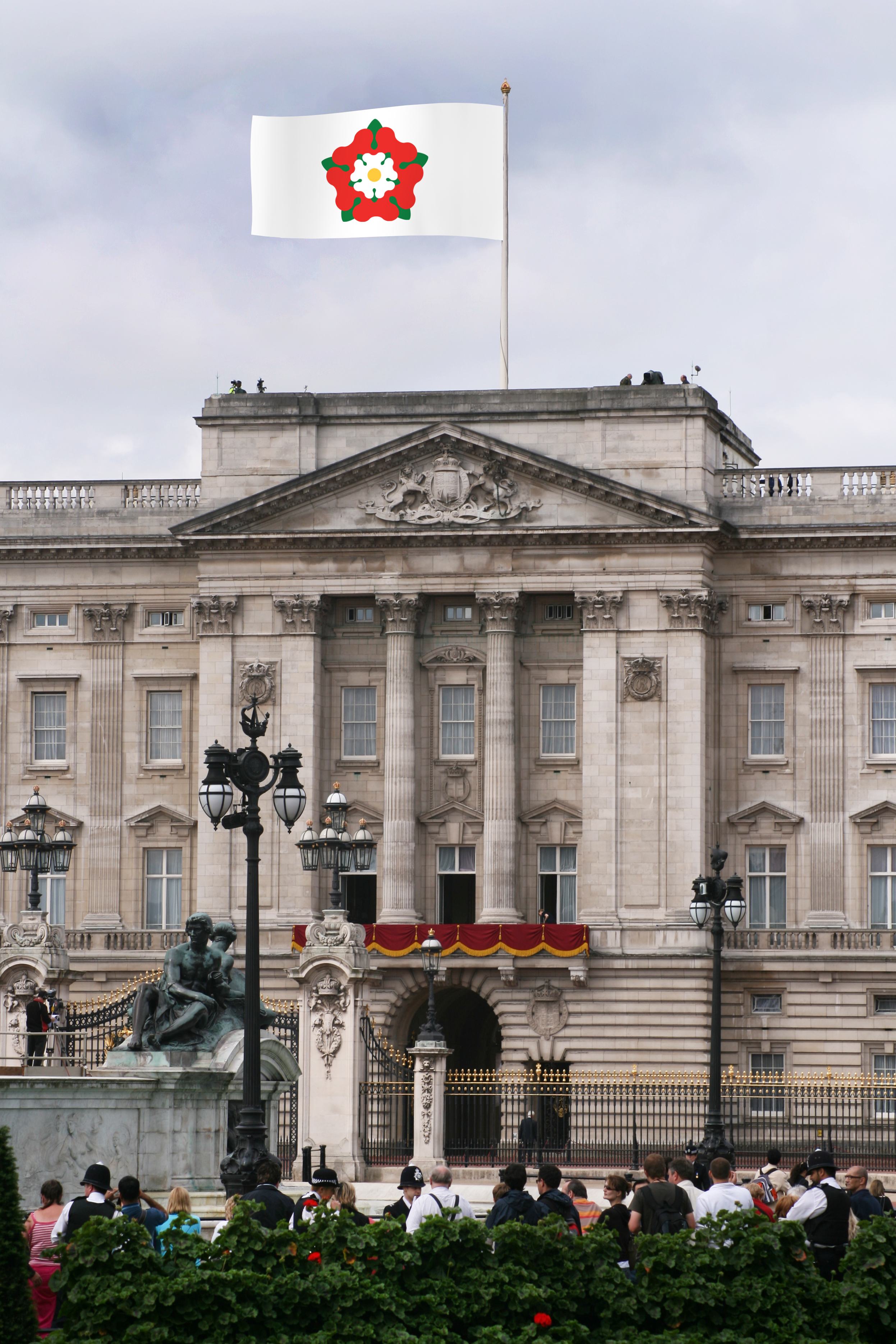
Quentin Newark
Designs at the ready